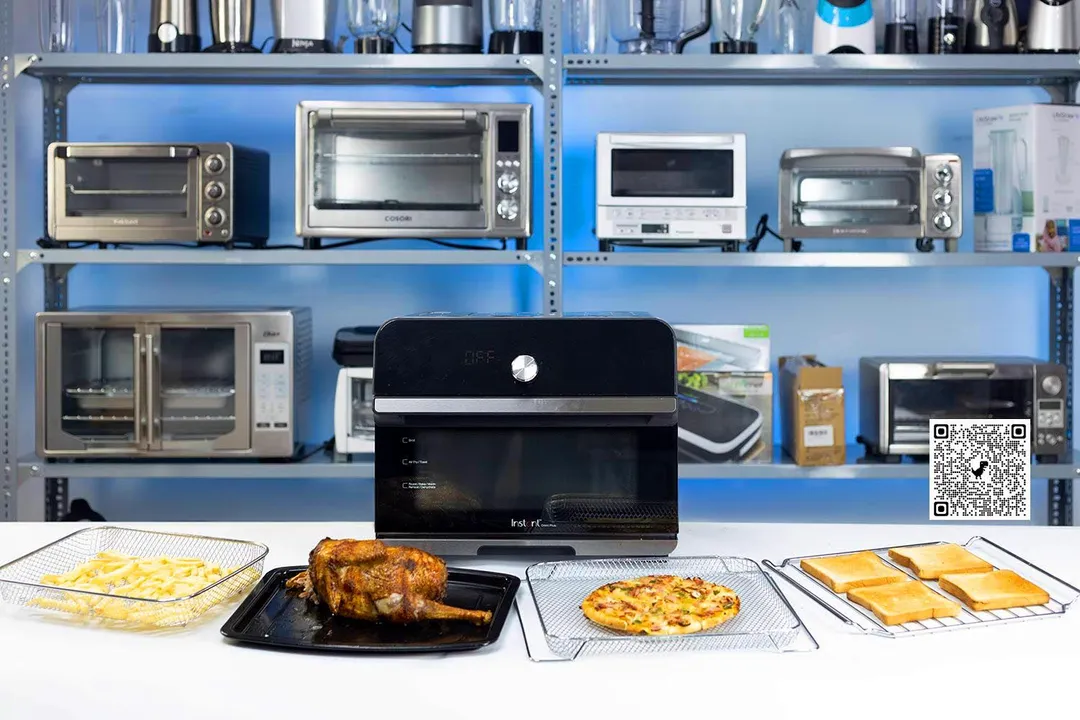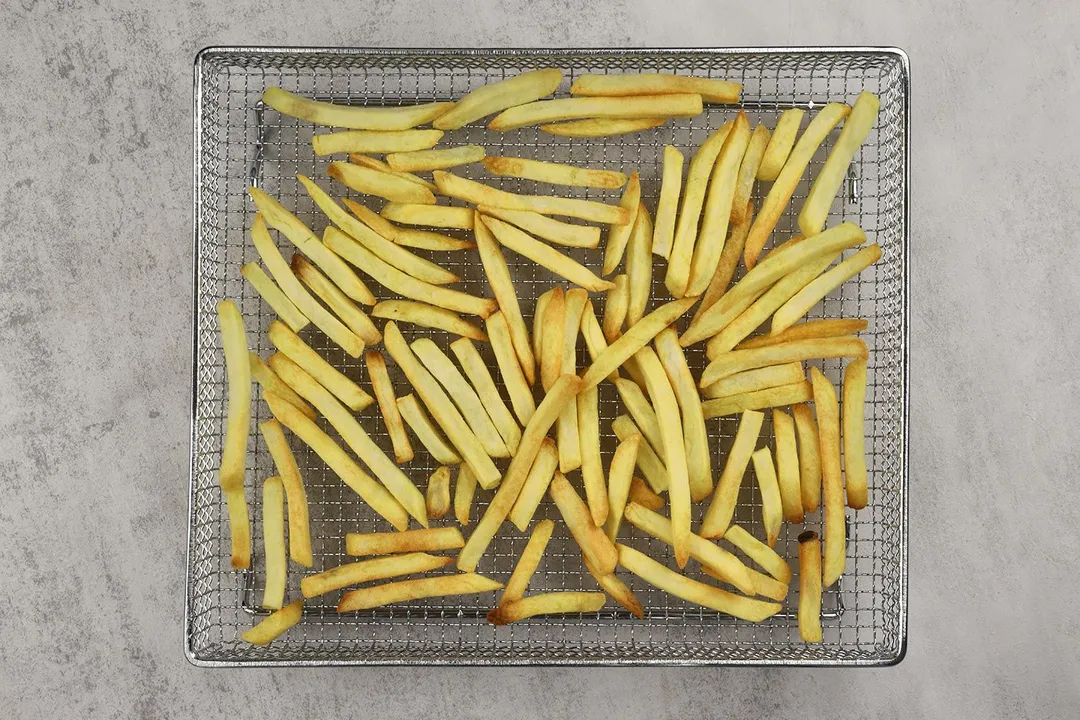Our recommendations are made independently through Research & Testing. We may receive commissions from purchases made via our links.
How We Tested Our Toaster Ovens v1.0
Check out how we test our toaster ovens at Healthy Kitchen 101. Our authentic reviews score the ovens’ design, usability, and performance.
In our toaster ovens review, we covered a wide array of units — each with its own distinctive qualities. Although smaller than regular ovens, toaster ovens are just as capable of making toast, baking pizza and fries, and roasting chicken, as well as much more.

However, to make the right purchase decision, comparing the efficiency of each toaster oven in certain aspects is essential. Thus, we bought a range of toaster ovens and put them to our curated tests for a complete evaluation.
Testing Methodology
It’s important to ensure our tests are consistent and can be replicated reliably. We make sure to replicate the tests on all toaster ovens so that our reviews are comparable.
It’s also important that our reviews stay current with the readers’ demands and the market environment. This is why we’ll update all the tests on a regular basis as we continue our research.
How We Test Toaster Ovens
Through a series of comparable tests, we formed assessments and divided 100% of the total score into 3 main aspects:
- Performance (50%)
- Design (25%)
- Usability (25%)
The overall score ranges from 0 to 10 for an easy presentation. Each aspect and each performance test are also scored on a scale of 0 to 10. Check out how we did it!
Performance (50%)
Performance takes up 50% of the overall score for a toaster oven. The toaster oven’s performance is important because it justifies the price before purchase. During use, it dictates user satisfaction and whether they would buy the oven again or recommend it. Performance also involves design and usability.
To thoroughly evaluate performance, we decided on 4 small tests. They are Toast, Pizza, Whole Roasted Chicken, and Baked French Fries.
1. Toasts (40%)
The test for making toast takes up 40% of the performance score. This is because the presets for making toast are one of the main selling points of a toaster oven.
For each oven, we use the best medium toast with 4 pieces of white bread. Then, we evaluate the toast based on Surface Color (20%), Consecutive Usability (30%), and Taste (50%).
Check out how we test making toast with our toaster ovens in detail.
2. Pizza (25%)
The test for baking pizza takes up 25% of our performance score for a toaster oven. Almost everyone loves pizza so it’s important that a toaster oven be able to produce a perfectly golden crust with beautifully melted cheese. We assess the resulting pizza according to the Cooking Time (20%), Crust (20%), Toppings (30%), and Taste (30%).
Check out how we test baking pizza with our toaster ovens in detail.
3. Whole Roasted Chicken (25%)
The test for roasting a whole chicken takes up 25% of our performance score for a toaster oven. A capable toaster oven should roast a whole chicken to golden perfection with crispy skin and it’s up to our test to see if each one does the business.
Thus, scoring factors are the Cooking Time (20%), Skin (20%), Doneness (20%), and Taste (40%).
Check out how we test roasting a whole chicken with our toaster ovens in detail.
4. Baked French Fries (10%)
The test for baking french fries takes up 10% of our performance score for a toaster oven. Oven-baked french fries are a healthier alternative to this common side dish and snack. The scoring for the fries test concerns cooking time (20%), color (20%), texture (20%), and taste (40%).
Check out how we test baking french fries with our toaster ovens in detail.
Design (25%)
Design takes up 25% of the overall score for our toaster oven tests. The toaster oven’s design is important as familiarity and aesthetic preference heavily influence the customer’s first impression.
It also helps you ascertain value for money by reflecting material durability, build quality, functionality, usability, and performance. We decided on 3 aspects to evaluate: Exterior, Interior, and Build Quality.
1. Exterior (20%)
We decided to score the exterior of a toaster oven based on the construction of everything on the outer shell. This included air ventilation holes, the oven door, handles, and also the removable bottom tray if available.
Points | Features |
|---|---|
Plus 2 | - Sufficient air ventilation - Cool touch oven door handle - Oven carrying handles - Back stands available |
Plus 1 | - Air ventilation on all sides - Tray level indicators on the door - Removable oven bottom tray available - A unique clever feature |
Minus 1 | - Not enough air ventilation |
Minus 2 | - The parts don’t fit well together - The shell doesn’t fully protect the interior - Digital display doesn’t work properly |
2. Interior (30%)
We determined the score for the interior of toaster ovens regarding the construction of the cooking chamber. This comprised the coating, internal lighting, number of tray levels, and type and number of heating elements.
3. Build Quality (50%)
The build quality is the most inclusive scoring factor of the design. This consists of material durability, design sturdiness, good assembly, working mechanics, and integrated safety mechanisms.
Usability (25%)
Usability takes up 25% of the overall score for our toaster oven tests. If you are able to check the oven out in-store and you find it easy to use right from the first try, it may well be an instant decision to purchase. The manufacturer's attention to convenient user interaction will also give you a better idea of the oven's value for money.
In our case, we’ll do the first and many following tries and present the result for you to decide. We chose 3 scoring factors which were User Control, Ease of Use, and Cleanability.
1. User Control (30%)
We assess the user control concerning the convenience of the control panel. This covers interactions with functional inputs, mechanical control knobs, buttons, and digital display.
2. Ease of Use (50%)
The ease of use is a consistent factor throughout all of our tests. This consists of our experiences with the internal lighting, heat insulation, convenient accessories, automatic features, readjusting cooking settings, and good safety mechanisms.
3. Cleanability (20%)
Although straightforward, it may be discouraging to keep using a toaster oven if it’s too difficult to clean. The cleanability comprises how easy it was to clean the inside and the outside.
Test Developers
Alan Nguyen is a writer and product reviewer at HealthyKitchen101. His major in English language teaching taught him to present concise information. In addition to his cooking hobby, he values the practical aspects of household appliances.
Lap is Head of the Research, Testing, and Review Team (RTR Team) at HealthyKitchen101.com, where he directs and supervises the testing of kitchen gadgets and appliances.
Nguyen Ntk is a graphic designer, photographer, and videographer whose philosophy centers around respecting and celebrating the beauty of reality. Through his lenses, Nguyen strives to capture the true essence of objects and events, showcasing and highlighting authentic features without distortion or exaggeration.






